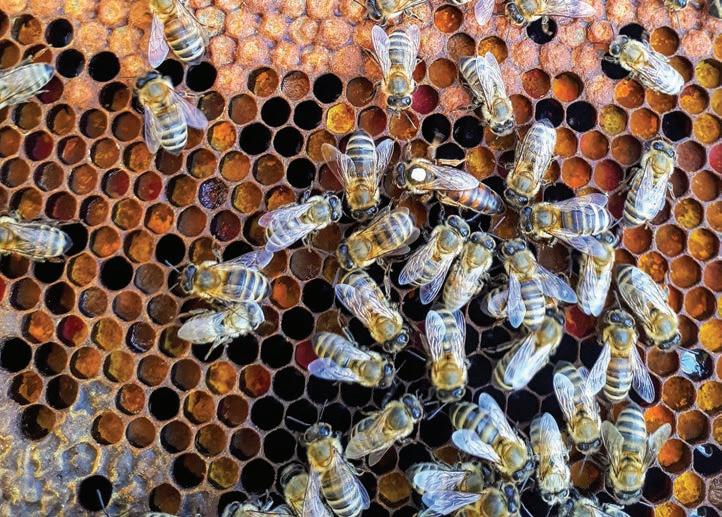
13 minute read
green hydrogen
READ IT ONLINE
THE GREEN DOOR
Advertisement
In the not-too-distant future, green hydrogen promises to replace diesel fuel and nitrogen-based fertilisers – and it’s completely emission-free. But what exactly is green hydrogen? And when will we be able to buy it at the corner store?
Words: Ian Lloyd Neubauer
More than 200 years have passed since Swiss engineer François Isaac de Rivaz invented the first hydrogenpowered combustion engine and fitted it to a vehicle. And more than 50 have passed since the terms ‘hydrogen economy’ and ‘green hydrogen’ were coined to describe the process of making hydrogen from renewables such as wind, solar and hydro.
Yet green hydrogen and all the wonderful things it can do – from powering hard-to-electrify sectors like long-haul transport to creating emissions-free fertiliser – remains a mystery to most of us: a buzzword that comes and goes. In 2009, for example, New Holland Agricultural developed the world’s first hydrogen-powered tractor. Trials showed it could perform all the tasks of the company’s T6000 tractor only with no emissions and in near silence. But it was never commercialised.
“Hydrogen has come and gone a couple of times. It’s almost like the rings of a tree,” Dr Daniel Roberts, leader of the CSIRO’s Hydrogen Energy Systems Future Science Platform, commented during a recent webinar hosted by Farmers for Climate Action.
“What we have that we have never had before is a really strong global market pull for green and clean hydrogen,” he added. “People really want to see things change. There are government strategies and funding schemes in place. Germany is looking to Australia to supply hydrogen as part of their transition to zero emissions. Japan and Korea have energy plans that rely on low-carbon and green as part of their transitions to zero emissions. It is really clear that things are different this time.”
DIESEL 2.0
Hydrogen is the most abundant element on earth. It is found in water, carbohydrates and all kinds of chemicals. But hydrogen rarely exists by itself in nature. It must be extracted through electrolysis – where you put negative and positive electrodes in water and turn the power on. The hydrogen moves towards the negative electrode and rises to the surface in the form of gas bubbles, where it can be captured.
Hydrogen made from coal and gas – by reacting them with steam – is already widely used for industrial feedstock, liquid fuels and reductants. But it makes a hell of a lot of CO2. Hence the names black, brown and grey hydrogen.
Green hydrogen is different. It uses renewable energy sources to power electrolysis, leaving nothing but water and hydrogen in its wake. It is easily converted into ammonia, a fuel source suited to slower speed diesel engines in ships and trucks.
“Hydrogen will be a major contender to replace diesel,” Mark Wallace, principal engineer at EnergyLink, a consultancy in Sydney, said at Exploring Beyond Diesel, an online forum hosted by the NSW Department of Primary Industries. “Having a locally produced fuel source will help shelter farmers from price increases and rapid fluctuations caused by global facts. And hydrogen does not require significant mindset adjustments when switching from diesel.”
“Tractors can be switched to hydrogen with operating hours or refuelling times that are comparable to diesel, which is important during harvest,” he added. “The diesel gensets scattered around the countryside can be replaced with hydrogen fuel cells, and the new technology does not have the same rigorous maintenance schedules as combustion engines. Even the way we move and store diesel around the country closely resembles how we would transport hydrogen: tube trailers and storage cylinders.”
Hydrogen can also be used to produce emissions-free ammonia for fertilizer. According to Mark, “studies show using hydrogen-enriched water can increase a plant’s resistance to pests, potentially removing the risk for more environmentally harmful methods of pest control.”
MAKING FERTILISER FROM SUNLIGHT
The CSIRO, which already has hydrogen-powered Toyotas, is working on next-generation technology that one day will allow farmers to make fertilizer directly from sunlight, water and some seriously slick hardware. “It’s probably not the sort of thing we can expect to go and buy in Bunnings in a couple of years’ time, but it is certainly on the development trajectory,” Daniel Roberts says.
So why is the green hydrogen door still closed? Because of the high cost of production.
Right now, it costs $8.75 per kilogram to make hydrogen with natural gas, and two to three times as much with solar, wind or hydro power.
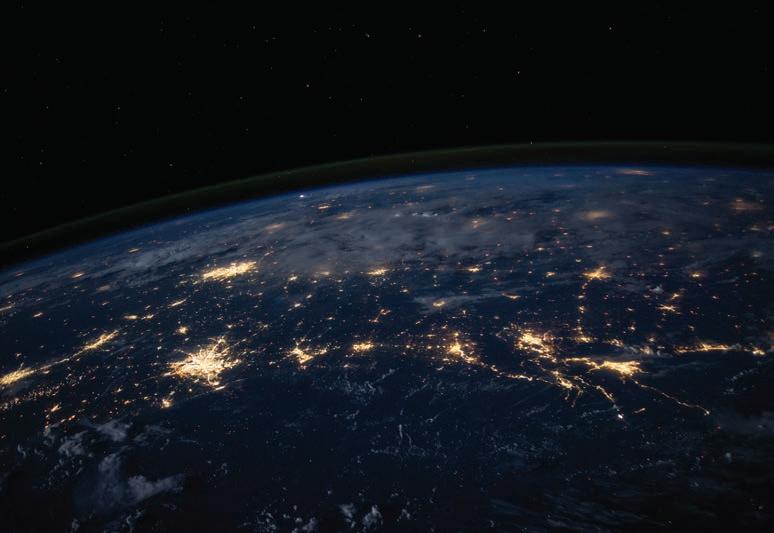

FROM LEFT: CITIES SEEN FROM SPACE; INVENTOR FRANCOIS ISAAC DE RIVAS; NEW HOLLAND'S HYDROGEN-POWERED NH2.

But multibillion-dollar investments by the government and the private sector in hydrogen and renewables will see the price drop to $2 per kilogram by 2030, according to Australia’s National Hydrogen Strategy and various other sources. “It is well and truly in the five- to 10-year time horizon. And at that cost, the world becomes a very different place as green hydrogen will be significantly cheaper than diesel,” Simon Helps, business development manager at Energy Australia, said at the online forum.
“Green hydrogen is going to get really, really big really, really quick. We are doing some early work around Moree with the cotton guys where we are looking at putting a spokeand-wheel model and a centralised electrolyser. If you made that stuff moveable, once you finish irrigating you can bring it back to a central location and power something big like a gin. Then you get two whacks with the same hammer.
“Most of these guys, their two biggest input costs are fuel and fertilizer,” Simon said. “Being able to make those things within 50km of your front door at a cost-competitive price point and not being made subject to the vagaries of whatever else is going on in the world will have a massive impact on our foreign trade balance, and put the focus on regional areas. We have seen a very good example of it in Germany where they were paid to make electricity, and that gave them income security, diversified their labour force and made them lots of money.”
IT’S ALREADY STARTED
Green hydrogen is more than facts and figures: it’s taking shape all around the country as you read this.
Yara, a fertiliser company that operates one of the world’s largest ammonia production plants in the Pilbara, has ordered the world’s first green ammonia floating bunkering terminals, a major step towards making shipping free of fossil fuels. Fortescue Metals will be making green hydrogen at a commercial scale next year and plans to use most of it to make green steel.
In Adelaide, a 1.25-megawatt electrolyser, the largest of its kind in Australia, is being installed. And in Gippsland, H2X Global is manufacturing emergency fuel cells for Bupa retirement homes and outfitting Ford Rangers with hydrogen fuel cells. A hydrogen tractor is on the drawing board alongside game-changing hydrogen solutions for broad-acre farming.
“We have had long discussions with cotton producers out west in New South Wales, who see their expenditure dominated by diesel, who are looking at producing their own hydrogen,” says Tony Blackie, H2X Australia’s VP of corporate relations. “Cotton farmers, wheat farmers and anyone in broadacre who use big multimillion-dollar headers that chew up a lot of gas and have gins running 24-seven, if they had a cheaper fuel source it could push the cost of production down and make our agricultural produce more competitive.”
Australia, Tony says, is a land of inventors. “We invented WiFi. We invented the Hills Hoist. And we have been developing hydrogen fuel cells for 25 years. Previously, we couldn’t get them off the ground because politicians were carrying lumps of coal into parliament. Now, everything has changed.”


Where safety meets style
Established in 2008, Fuglies Eyewear is now the most renowned Safety Eyewear brand worn and trusted in the mining industry.
Specialising in upmarket quality eyewear, the range now includes factory-made prescription lenses as well as off-the-shelf bifocals and fully magnified safety readers (RRP $49.95). All glasses in the range come fully certified to Aus/NZS 1337.1 for plano lenses and 1337.6 for the magnified and prescription range.
There is also a higher ballistic military range (120 mps), and frame and lens combinations to please everyone.
Buy yours with confidence today. You won’t look back!
Visit us at fuglies.com.au or call and talk to our friendly team on 0408 748113
NOW
AVAILABLE ONLINE!
PRESCRIPTION SAFETY SUNGLASSES



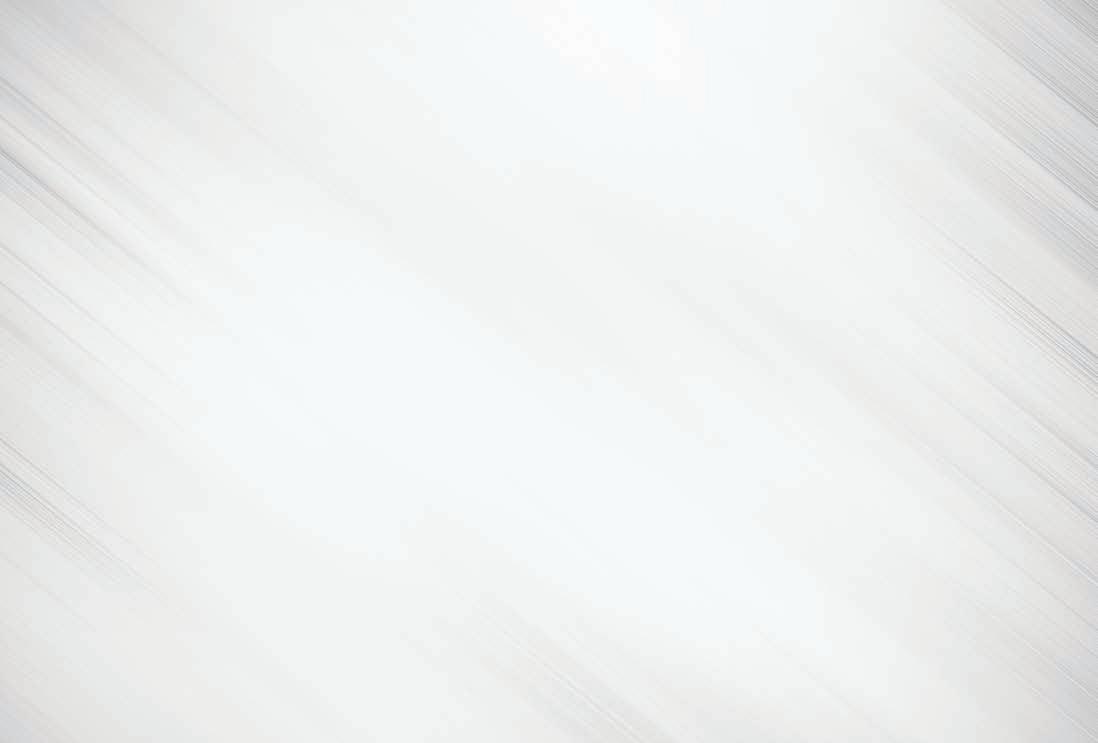

NO TREE, NO ME
The Australian Koala Foundation calls for the new Environment Minister to support the Koala Protection Act.
Words: Phoebe Tran
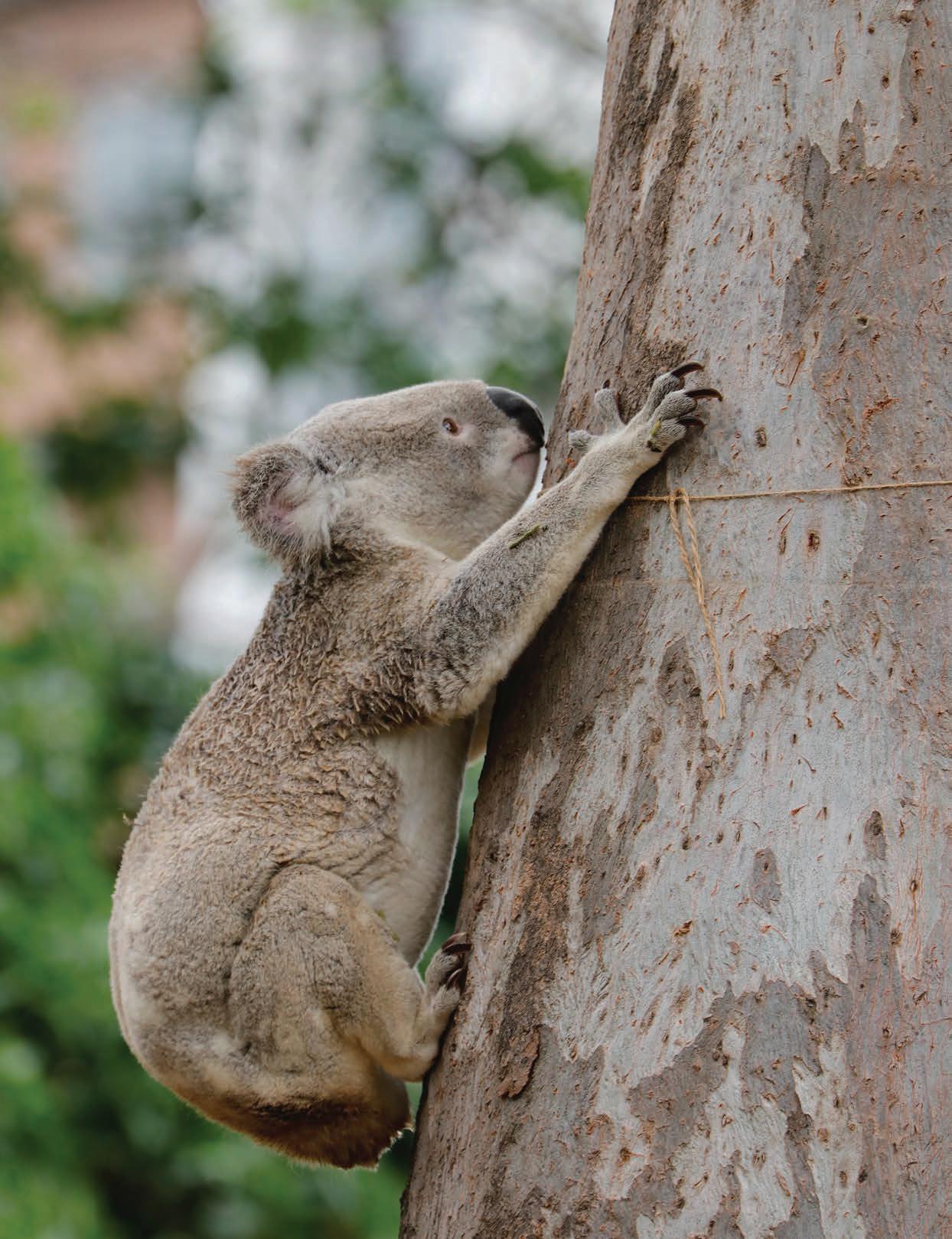
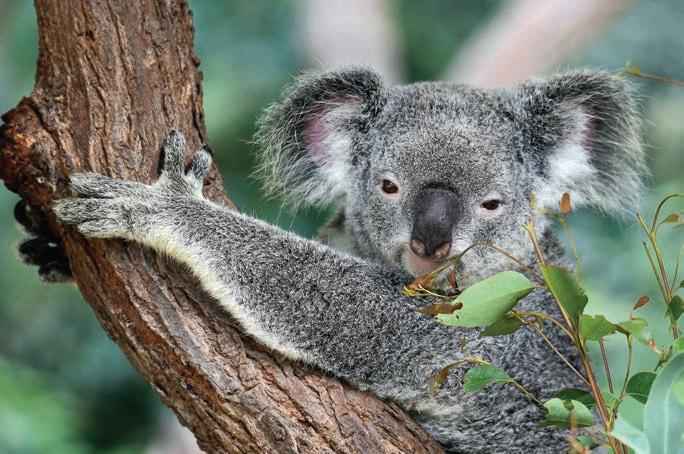
Just after settling into her office as the new Environment Minister, the Hon. Tanya Plibersek received a message from the Australian Koala Foundation (AKF) urging her to take action, as the fate of the iconic Australian animal rested in her hands.
The koala population in Australia has decreased significantly in the last few decades, as a result of various factors such as habitat destruction, attacks by other animals, bushfires and road accidents. The AKF estimates that there are less than 60,000 koalas in the wild, possibly as low as 30,000. The AKF has been working hard for more than thirty years, using their brightest minds to develop detailed habitat mapping and population data and drafting solutions to save the koala. Their projects include the Koala Kiss Project, aiming to connect fragmented koala habitats, and the Koala Protection Act, a legislative solution that is expected to have a significant impact on this problem.
AKF Chair Deborah Tabart has written to the new minister, requesting to meet with her to discuss the necessity and impact of implementing the Koala Protection Act. “The new Environment Minister is the fifteenth during my 33-year career at the Australian Koala Foundation. I hold great hope that with the minister’s parliamentary experience and expertise she will be able to help save the koala,” says Deborah.
The proposed Act dives deep into the problem and comes up with a more thorough approach. Previous attempts by governments to protect the koalas only focused on the koala itself, while leaving their habitat vulnerable to industrial processes. The Act instead focuses on protecting trees, including empty habitats. This change might sound detrimental to politics and industries alike, however, the AKF believes that good industry leaders should not be threatened by it. “The Koala Protection Act is firm but fair. It requires no funding, just the Minister’s signature and the political will to convince the industry that they now have to do things by the book. [It] is a revolutionary piece of legislation that will change environmental law forever. I know it is feared by both major political parties and the industries that support them, but it’s ultimately what’s needed to truly save the koala,” says Deborah.
“I have expressed to the Minister that I do not envy some of the decisions she will need to make to protect koala forests and the waterways that sustain them, but it’s what is required to lead to a more sustainable future.”
In April 2012, the Australian government adopted the “Vulnerable” status for the koala in NSW, the ACT and QLD. In just ten years, this status has been updated to “Endangered.” The Queensland Minister has even called the Queensland koala population “functionally extinct.” However, Victoria and South Australia have so far been excluded from the listings. “Which is ridiculous. Why should some Koalas miss out?” Tabart says.
The AKF has been disappointed numerous times by the government’s ineffective actions towards conserving the koala, and is calling for the urgent adoption of a Koala Protection Act. Half-hearted solutions will only delay the inevitable: what they need is strong, well thought out legislation action to stop the continuous damage to the natural koala's natural habitat. The message is simple: “No tree, no me.” To find out more about the AKF’s plans to save the koala, visit savethekoala.com.
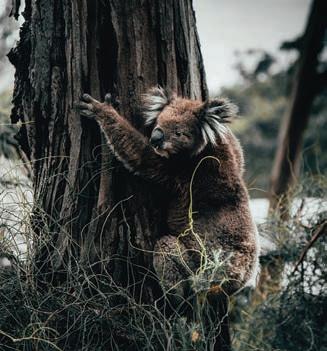
READ IT ONLINE

SAVING AUSTRALIAN HONEYBEES
A research project conducted by Macquarie University hopes to stop the decline of our honeybee population.
Words: Matilda Meikle
Scientists are working to develop a new immunity-boosted probiotic, which may help fight the infections causing bees to disappear around the world. They are aiming to boost the honeybee’s resistance to disease – strengthening their immunity – so they can continue to thrive and make a positive impact on their surrounding environment. Project lead Dr Fleur Ponton, from the School of Natural Sciences, says that infectious diseases making their way into hives harm the bee’s ability to pollinate. “Several different diseases infect hives and it is challenging to anticipate which disease is actually responsible for poor hive performance. With this in mind, our team is working towards a more broad-spectrum approach to disease resistance instead of looking at just one singular infection.”
THE BEES KNEES
Honeybees are a vital part of our ecosystem. By carrying out the important process of pollination, they support food security and variety in plants and animals. Around 75 per cent of crops produce better yield if they’re helped to pollinate, and bees are the biggest group of pollinators in the world.
According to Hort Innovation, crops dependent on pollination in Australia are worth around $4.3 billion per year. With an estimated 600,000 hives across the country, and a honey production of around 30,000 tonnes annually, it’s clear bees are important to several parts of everyday life.
OPPOSITE: HONEYBEES ARE AN ESSENTIAL PART OF OUR ECOSYSTEM. RIGHT: THERE ARE AN ESTIMATED 600,000 HIVES ACROSS AUSTRALIA. However, bee colonies are facing the threat of a declining population, affecting global food supply and the pollination of crops. This may be due to an increased use of pesticides, the growth of urbanisation, and global warming, impacting the bees’ ability to survive. Australia is also the only country where the parasitic varroa mite has not yet impacted the bee population. The mite is known as a major cause of colony collapse, and has a disastrous effect on the honeybee species. Without bees, both humanity and the environment suffer, meaning scientists are now searching for new ways to keep this species safe.
WHAT'S THE BUZZ?
This new research program is funded by Hort Innovation and Macquarie University, supporting the Hort Frontiers Pollination fund which aims to protect bee species around the world from extinction. The focus of Dr Ponton and her team is to create tools which detect diseases in hives before they are given the chance to spread.
According to her colleague and fellow scientist, Dr Ajay Narendra, “an early warning system for disease detection could be very useful from a biosecurity perspective, helping scientists monitor for new diseases entering hives and infecting bees.” The project will also focus on how illnesses affect a bee’s ability to learn and memorise, leading to reduced pollination and hive performance. If bees are unable to relocate their hives and find food after their day-to-day activities, they face strong challenges to survival.
The team behind this research is investigating many ways to deliver these probiotics to the hives. “The possibilities for delivery are endless. One potential idea could include supplemental feeding to honeybee hives, a common practice already in many countries but less developed in Australia,” says Dr Ponton. While research is still being undertaken, these scientists are dedicated to finding innovative and long-lasting solutions, helping to secure the future of bee populations around the world and maintain environmental wellbeing.
